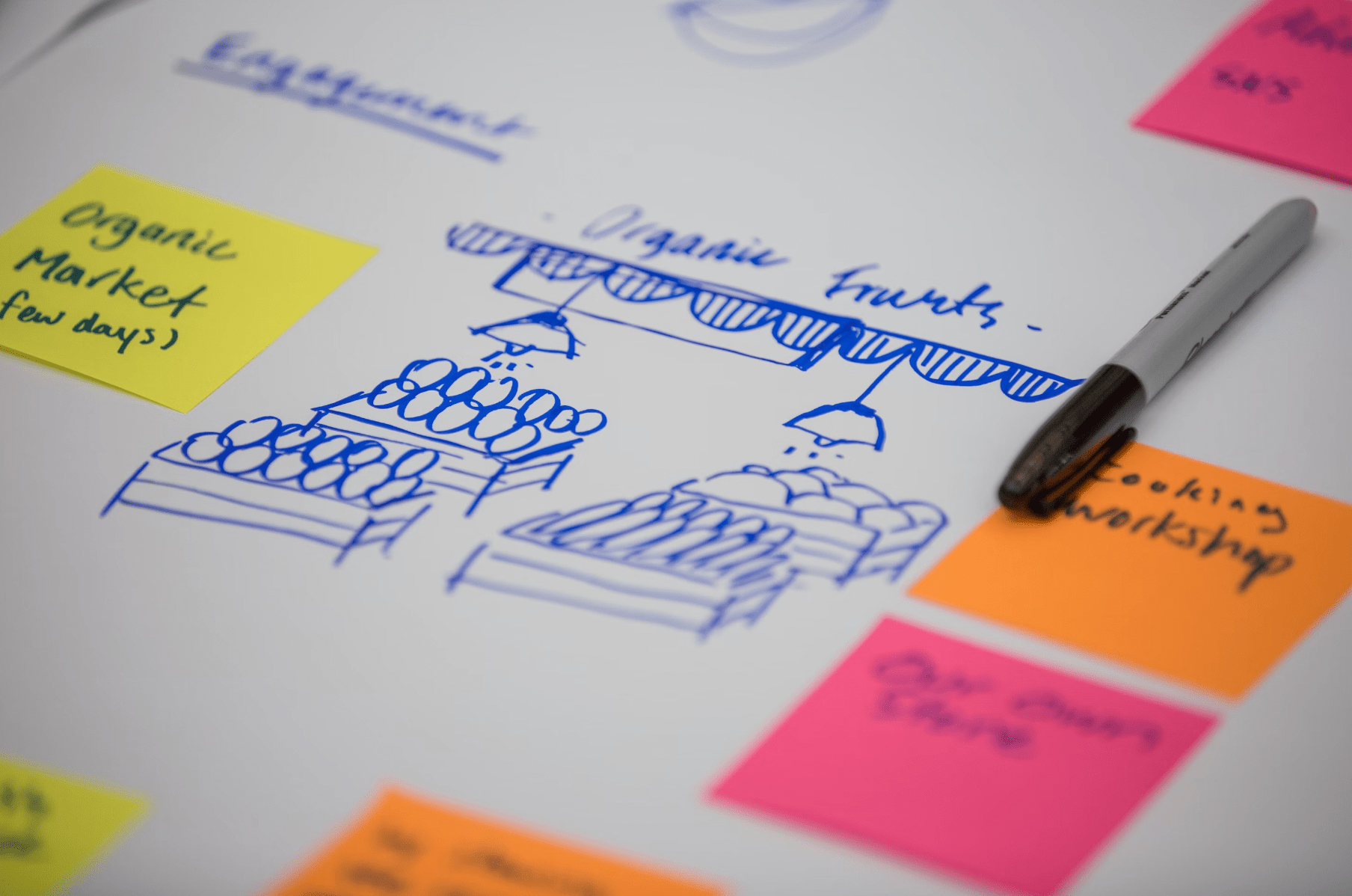The Five Crucial Choices For Your Social Enterprise
A well-designed social enterprise is remarkable – a business that genuinely makes a positive difference.
They have wholesome brands and communities, sustained impact, desirable products and services, and force rivals to lift their game.
They can also be great places to work, creating meaningful employment and without the pain of perpetually chasing grant money.
You’re wondering what the catch is, and there is a catch: good social enterprise have to constantly navigate five crucial choices.
Nailing 4 out of 5 isn’t enough, failure in any one area can completely undermine the rest of the work.
These aren’t templates or rules, and they are not easily resolved.
Each of them takes a lot of work, and changes to one will affect some of the others, so it becomes a constant challenge for leaders.
But with the right terminology, mindsets and tools, each of these is a solvable problem.
If you’re wondering whether you need to nail all five, please feel free to verify this for yourself – talk to anyone with a successful social enterprise, and ask which of these you can neglect.
The five crucial choices are:
1. What is our Mission?
2. What is our Impact Model?
3. What is our Business Model?
4. What is our Financial Model?
5. What is our Testing Plan?
You probably have a natural preference or experience in a few of these, but a leader needs to have a good design for all five.
Mission
The first choice is likely the easiest, as it has been on the founder’s mind for a long time, and has likely been articulated repeatedly in your development process.
For new founders, the best place to start is with a series of test questions to help you find and name your cause.
These include:
What am I happy to do for free? Where do I naturally spend my money?
What are my friends sick of me talking about?
What makes me angry? “I can’t believe it’s 2023 and we still ______”
How deep is the problem? What are surface level symptoms and what are the deeper root causes?
What do I believe that others don’t?
It can also help to look at who else is currently working on a similar cause, or a difference cause but with similar approaches.
These are not strictly “competitors”, but learning from them can save you stress and show you where you have a unique perspective.
Mission statements can be cliché or overly ornate, so Kevin Starr recommends a technique called The Eight Word Mission Statement.
This is comprised of a verb, a target group and a measurable outcome, such as:
Save kids’ lives in Uganda.
Rehabilitate coral reefs in the Western Pacific.
Prevent maternal-child transmission of HIV in Africa.
Get Zambian farmers out of poverty.
This technique strips away all of the jargon that gets in the way of clear communication.
By focusing on who it’s for, what you want to do and how you’ll know it’s working, you have a blunt and inspiring summary of what you want to achieve.
For established social enterprises, not-for-profits or institutions, this might be a process of revisiting rather than reinvention.
That means going back to the original intention of the work, back to previous articulations of your mission and vision, or quotes from past customers and beneficiaries.
Once you have a clear and compelling articulation of your mission, it should not change too much month to month.
Your mission should be a source of clarity and direction, like a compass, to keep you on track as the rest of your work evolves.
Impact Model
While your mission gives you a compelling target, there will be lots of ways you could go about trying to reach it:
What sort of work will you do?
What role do you play in the value chain?
Where can you make the biggest contribution?
Do you want to make a large contribution to a few people, or a smaller contribution to lots of people?
What might be a realistic starting point, and where would to get to eventually?
There is unlikely to be one single “correct” answer, this is about understanding the tradeoffs in your work, and finding the combinations you like the most.
More specifically, your impact model describes your “recipe for change”.
Like a recipe, this should be a repeatable process which consistently generates good results.
e.g. if we take people like…
And offer training in…
That will help them to work in…
And create more…
And alleviate issues like…
You might then adjust the recipe to suit different circumstances and audiences, paying close attention to whether or not it’s leading to the desired result.
This is what would usually be described by a Theory of Change and Program Logic.
Finally, you’ll want some sort of measurement for your impact model, so that you’ll know if you’re making a real difference.
In some cases, good intentions lead to negative outcomes, and a social entrepreneur risks making situation even worse.
These outcomes measures help you improve your work, demonstrate that your recipe is effective, and tell a compelling story to your customers.
Business Model
It’s good to be clear on your cause, which is largely within your own control.
Your business, on the other hand, has to interact with customers and your industry, and will likely
be in a constant stage of change.
Your business model describes how your company serves and delights customers, how you run the systems behind the scenes, and how you generate income.
These are best described by a Business Model Canvas, a one-page business plan that highlights the desirability, feasibility and viability of each business unit.
The difference between a business model and a business plan is the level of detail, and more isn’t always better.
When designing ideas, a one-page canvas is much easier to draw, adjust and explain.
70-page business plans are hard to read, let alone write, and can quickly become works of fiction.
We want to use simpler tools in the design stage, validate the key assumptions, then go into detail once we’re ready to seriously invest.
Business models evolve over time, changing to suit new markets, new menu items, new partnerships, clever pricing or an integration of your impact model.
For this reason, we don’t want to fall in love with the specifics of the model, knowing that it will continue to change each year.
As they say: “Write your principles in pen and your business model in pencil”.
Financial Model
Numbers are everyone’s business – if you try to ignore the financial side of your work, you’ll end up with nasty surprises.
But financials don’t need to be negative or scary, they can be a source of strength.
Budgets let you tell your money where to go, rather than wondering where it went.
If your team has clarity on the numbers, they’re equipped to make great choices that grow the business as well as your social impact.
Financial models show you how money flows in and out of the business, helping you to anticipate issues in advance, and understand when and how you make a surplus.
A business manager who has financial clarity is best equipped to make early interventions, offer insights to the rest of the team, and ensure that cashflow won’t become a headache as the organisation grows.
These models can be as simple or sophisticated as needed, so long as they are well understood by the team.
A complex spreadsheet that doesn’t tell a clear story is borderline unhelpful.
Everything in this category is a learnable skill – you don’t need to be an accountant, but you do need to take a genuine interest.
Testing Plan
These three models (impact, business and financial) will naturally be full of assumptions and guesses.
Those guesses help you to make rapid progress with your ideas, but that doesn’t mean they are true.
It’s almost certain that some of your assumptions are wrong, this is the nature of entrepreneurship.
That’s not a problem if you catch the faulty assumptions early, while it’s cheap to make changes:
Using prototypes and customer interviews to see if your business is genuinely desirable, feasible and viable.
Using a financial model to spot a crunch point in your cash flow, when the business temporarily runs out of money.
Discovering that the initiatives that you thought would create the most impact are largely ignored by your beneficiaries, who want something more relevant or easy to use.
Tests can be uncomfortable at first, since there’s often excitement and optimism around new ideas, and tests represent potential bad news.
However, tests are your friend, since they can offer early validation of your models, or identify issues and gaps that would have otherwise cost a lot of time and money to resolve at scale.
A helpful framework comes from the Strategyzer Test Card, made up of four prompts that guide you into designing a relevant, useful test for each situation.
Frequent and cheap tests let you see the effects of your strategic choices, and give valuable insights into what you might adjust in your next drafts.
How These Choices Affect Each Other
As you can imagine, these five choices are interconnected, and changes in one area can unsettle other parts of your work.
Decisions in your business model and financial model might affect how much you can do in your impact model.
Your mission might influence your product and service line-up and how you treat your customers, or who you intentionally include/exclude.
Cashflow might influence the timing and rollout of new projects, making you start at a larger scale, or grow when there’s a surplus, thereby reducing risk.
In all cases, clarity brings you insight into how all the pieces of the business fit together, and how they can support each other instead of creating conflict.
Leaders will need to constantly revisit and rework each of these five, especially their business model and their testing plan.
You are bound to be faced with choices, some exciting and some intimidating:
Should we apply for this grant? It’s not exactly what we had in mind, but could the money give us the stability to do other projects?
This organisation wants to partner with us, what might we do together?
If we order in larger quantities, our cost per unit goes down, can we afford the cash hit?
We’ve been invited to expand our work into a new state, will our methodology translate?
A new competitor has begun to take away some business, what might we need to change?
What roles do we need to recruit next?
Someone suggested a new initiative, is there a way we could get some market feedback before making a commitment one way or the other?
We’ve had some scepticism about the long-term benefits of our work, what would we like to show people as a response?
The two worst approaches to these choices are drastic decisions and indecision.
Drastic decisions often fail to think through the effects on the rest of your work.
Indecision can lead to opportunities passing you by, or letting problems get worse and more costly to resolve.
If you are frequently thinking about these crucial choices, you give yourself the best possible chance of success.
Step One – A Shared Language
There is no strict recipe for these five choices, no universally correct options that applies to every organisation.
The best paths today might not have been available 10 years ago, and what makes sense 10 years from now isn’t an option tomorrow.
What will help is having a shared language and shared mental models for each of the five crucial choices, particularly with your team and your board.
If you can have open conversations and stay on the same page, you can cut to the tough decisions that need to be made.
Step Two – Third Drafts
The first version of these models will probably be terrible, and that’s normal.
The second version will be half-decent, but the third version will look like it belongs to you.
For this reason, your priority should be to get the first two drafts out of the way now, so that you can begin producing more sophisticated and accurate descriptions of your work and your decisions.
Step Three – A Commitment To Communication
If you prepare these diagrams, values and canvases, laminate them, stick them on the wall and never go back to them, then you won’t experience much of the benefits.
It becomes “innovation theatre” – the illusion of creative progress.
The benefits come from frequent check-ins, from staying up to date and talking with the right members of your team throughout the year.
Most problems will be solvable, if you catch them early and can talk honestly about your options, and the trade-offs you’re navigating.
Trade-offs are the essence of strategy; they are the decisions that make or break your work.
If you don’t talk about them, you don’t avoid them, you just make worse decisions by default.
If you’ve haven’t examined these crucial choices before, today is a great day to get started.
It probably makes the most sense to begin with your mission and end with your testing plan, but the rest is up to you.
Chances are, you can have anything you want, but not everything and not all at once.
When you feel stuck, lost or ready to take the next step, talk to your coach.
Outside eyes will help identify things you’ve missed, highlight the best parts of your work, and help you articulate what you’d like to do next.








